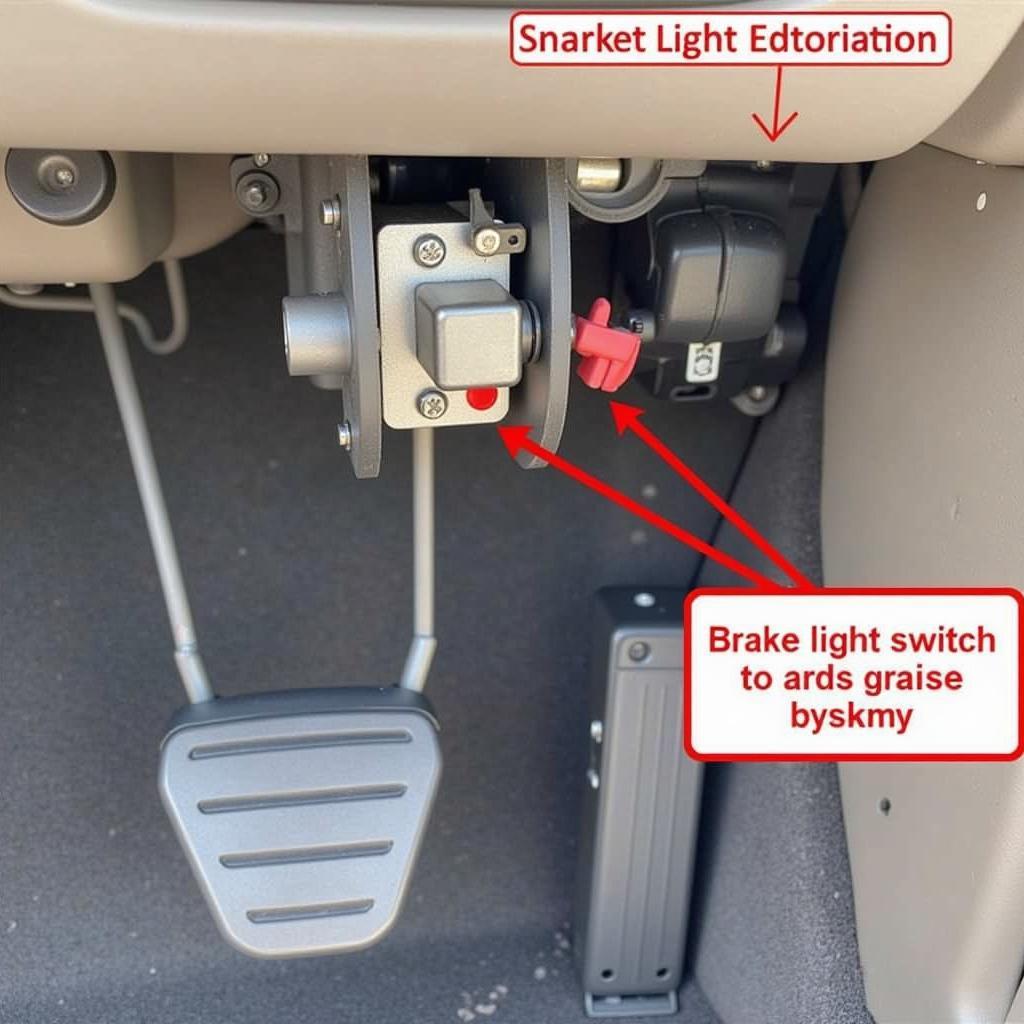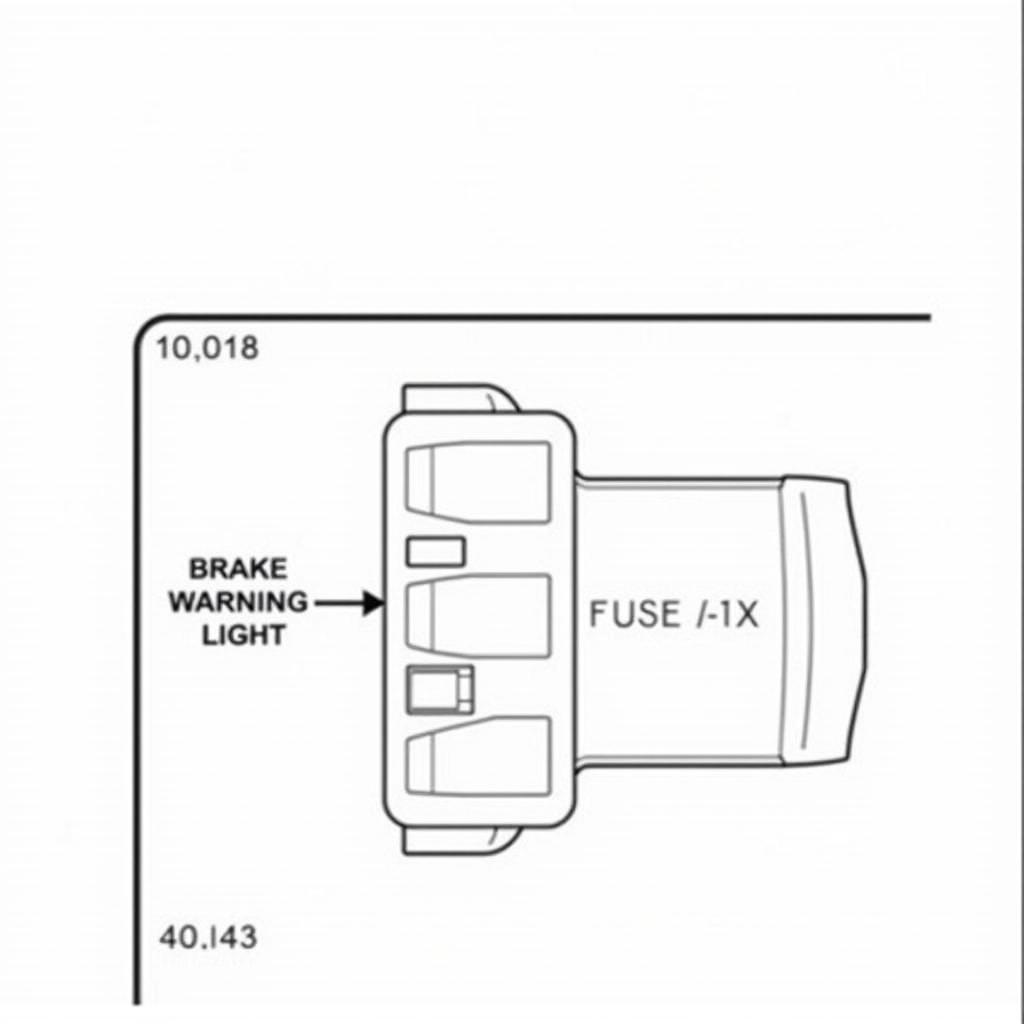A “lamp brake warning output circuit failure” in your Ford Econoline can be a frustrating issue, potentially indicating problems with your brake system. This article will help you understand what this error means, diagnose the potential causes, and guide you through troubleshooting steps to resolve the problem. We’ll also explore the benefits of remote software diagnosis and programming for fixing such issues.
Understanding the Lamp Brake Warning Output Circuit
The lamp brake warning output circuit is responsible for illuminating the brake warning light on your Ford Econoline’s dashboard. This light serves as a critical safety feature, alerting you to potential issues within the brake system, including low brake fluid, malfunctioning brake components, or problems with the anti-lock braking system (ABS). When the circuit fails, the warning light may stay illuminated constantly, flicker intermittently, or fail to illuminate at all.
Diagnosing a Lamp Brake Warning Output Circuit Failure
Several factors can contribute to a lamp brake warning output circuit failure in a Ford Econoline. Identifying the root cause requires a systematic approach to diagnosis. Here are some common culprits:
-
Faulty Brake Light Switch: This switch, located near the brake pedal, signals the brake lights to turn on when the pedal is depressed. A malfunctioning switch can also trigger the warning light.
-
Blown Fuse: A blown fuse in the circuit can interrupt the power supply to the warning light, causing it to malfunction.
-
Wiring Problems: Damaged, corroded, or loose wiring in the circuit can prevent the signal from reaching the warning light.
-
Faulty Lamp Brake Warning Module: In some Ford Econoline models, a dedicated module controls the brake warning light. A malfunctioning module can cause erratic behavior of the warning light.
-
Low Brake Fluid: While not directly related to the circuit, low brake fluid often triggers the warning light. It’s crucial to check the fluid level as a first step in diagnosis.
 Ford Econoline Brake Light Switch Inspection
Ford Econoline Brake Light Switch Inspection
Troubleshooting the Issue
Before seeking professional help, you can perform some basic troubleshooting steps:
-
Check the Brake Fluid: Inspect the brake fluid reservoir and top it off if necessary. If the fluid level is consistently low, there might be a leak in the brake system, requiring immediate professional attention.
-
Inspect the Brake Light Switch: Visually inspect the brake light switch for any signs of damage or wear. Test the switch by depressing the brake pedal and observing if the brake lights illuminate.
-
Check the Fuses: Locate the fuse box and check the fuse related to the brake warning light. Replace the fuse if it’s blown.
-
Inspect the Wiring: Carefully examine the wiring connected to the brake light switch, warning light, and any related modules. Look for any signs of damage, corrosion, or loose connections.
 Ford Econoline Fuse Box Diagram
Ford Econoline Fuse Box Diagram
The Power of Remote Diagnostics and Programming
Modern technology allows for remote diagnosis and programming of vehicle systems, offering a convenient and efficient solution for certain issues. A qualified technician can remotely access your Ford Econoline’s onboard computer system to pinpoint the cause of the “lamp brake warning output circuit failure” and potentially resolve it through software updates or adjustments. This approach can save time and money compared to traditional diagnostic methods.
“Remote diagnostics allows us to quickly pinpoint the problem without requiring the vehicle to be physically brought to the shop,” says John Miller, a senior automotive electrical engineer with over 20 years of experience. “This is especially helpful for customers who live far away or have busy schedules.”
Conclusion
A “lamp brake warning output circuit failure” in your Ford Econoline requires prompt attention to ensure your safety on the road. By understanding the underlying causes and following the troubleshooting steps outlined in this article, you can take the first steps towards resolving the issue. Consider the advantages of remote diagnostics and programming for a faster and more efficient solution. Remember, a properly functioning brake system is crucial for your safety and the safety of others, so don’t hesitate to seek professional help if you are unable to resolve the problem yourself.
“Remote programming is also a powerful tool,” adds Miller. “In some cases, a simple software update can fix the problem, avoiding the need for costly repairs.”
FAQ
-
What does the brake warning light mean? The brake warning light indicates a potential issue within your brake system, such as low brake fluid or a malfunctioning component.
-
Can I drive with the brake warning light on? It’s not recommended. A lit brake warning light indicates a potential safety hazard. Have the issue diagnosed and repaired as soon as possible.
-
How much does it cost to fix a lamp brake warning output circuit failure? The cost depends on the underlying cause. A simple fuse replacement can be inexpensive, while more complex repairs, such as replacing a module, can be more costly.
-
How can I find a qualified technician for remote diagnostics? Contact a reputable automotive repair shop specializing in remote diagnostics and programming for Ford vehicles.
-
Is remote diagnostics always successful? While remote diagnostics can effectively pinpoint many issues, some problems may require physical inspection and repair.
-
How can I prevent future lamp brake warning output circuit failures? Regular maintenance, including brake fluid checks and inspections of brake system components, can help prevent future issues.
-
What are the benefits of remote software programming? Remote software programming can address specific issues without requiring physical access to the vehicle, saving time and potentially reducing repair costs.


